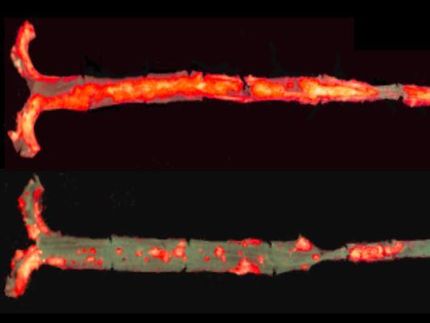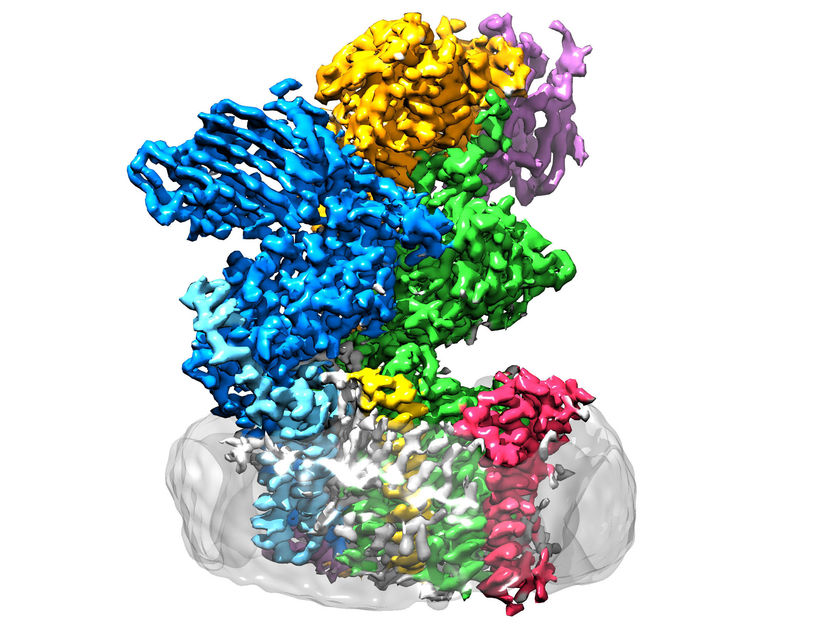Innovative medication to shatter blood clots with light
Earthquakes, snakes, forest fires – none rob humans of life more frequently than the tiny clumps of fat, calcium and cholesterol we know as blood clots. Every fifth human dies when a blood clot, or more correctly cholesterol plaque, loosens and gets stuck somewhere in the heart or brain causing heart attacks and strokes. Now, University of Copenhagen chemist Jørn Bolstad Christensen has been tasked, as part of an International team, with developing a unique approach to attacking the deadly arterial deposits.
The plaque is to be targeted and removed by illuminating a newly developed drug with infrared light. Jørn Bolstad Christensen has high expectations for the project’s outcome. “If everything goes as planned, it should only be about five years before we have a therapy that can both detect and eliminate dangerous plaque. We hope to be engaged in preliminary human trials when these five years are up,” says Christensen.
Key role in international collaboration
Christensen, an associate professor at the Department of Chemistry, will be responsible for developing a key component of the drug in a collaborative research project that involves 19 companies and universities throughout Europe. The project is funded with 8 million Euro (60 million Danish kroner) from the EU’s Seventh Framework Programme for Research (FP7).
Chemical Twix
Battling plaque is tough, in part because it is found inside blood vessels, but also because plaque comes in two forms – innocuous plaque and harmful plaque. Thus, Jørn Bolstad Christensen needs to develop a chemical twix-bar of sorts, a two-in-one package. He must fabricate a bi-functional nano-molecule that will seek and then destroy harmful plaque.
Molecule with a coupled task
One part of the molecule needs to differentiate between dangerous and harmless plaque and make sure that the entire molecule adheres only to the dangerous deposits. The other part of the molecule will consist of a dye which will serve to catalyze a chemical breakdown, oxidization, when illuminated by infrared light. Both the recognition component and the dyeing component are being developed by other research groups. Christensen and his team simply need to develop a molecule able to combine both functions in a solitary structure.
Quite a feat
Coupling functions sounds like the simple part of the task, but seen from the laboratory chemistry perspective, it will be quite a feat. Indeed, it is so difficult that three other research groups will also be competing to develop the appropriate molecule, according to Christensen. “The best solution will move ahead in the process and even if it isn’t us, we will have still gotten something out of the research involved.”
Nano-sized toolbox
The molecular bits that carry out the work, the functional groups, must be precisely situated, in their angle and location, in order to be effective. Few molecular types are able to accommodate for such an accurate “tool”. One of the very few molecular types suitable for use as this type of chemical tool box is the dendrimer. Dendrimers are bush shaped molecules that are especially challenging to work with. “Most groups interested in this area are not pure synthetic chemists. We happen to have cracked the code in synthesizing dendrimers equipped with precise characteristics,” explains Jørn Bolstad Christensen.
More effective, less dangerous
Today, blood clots are treated using a combination of anticoagulants, vasodilators and surgical procedures such as angioplasty. The new therapy will be a better targeted and more cautious treatment because it goes after harmful plaques and breaks them down one molecule at a time, thus avoiding unintentional damage elsewhere in the body.
Organizations
Other news from the department science

Get the life science industry in your inbox
By submitting this form you agree that LUMITOS AG will send you the newsletter(s) selected above by email. Your data will not be passed on to third parties. Your data will be stored and processed in accordance with our data protection regulations. LUMITOS may contact you by email for the purpose of advertising or market and opinion surveys. You can revoke your consent at any time without giving reasons to LUMITOS AG, Ernst-Augustin-Str. 2, 12489 Berlin, Germany or by e-mail at revoke@lumitos.com with effect for the future. In addition, each email contains a link to unsubscribe from the corresponding newsletter.





















































